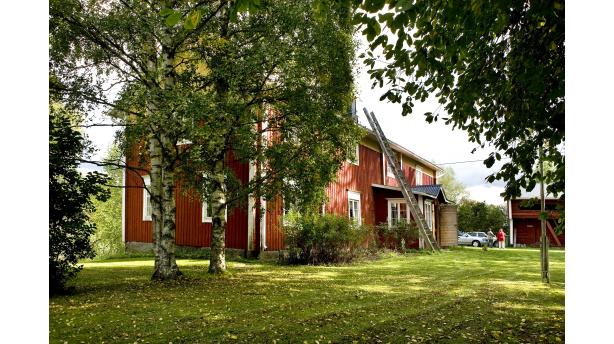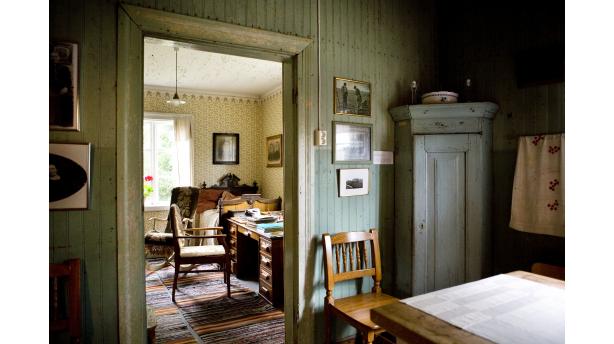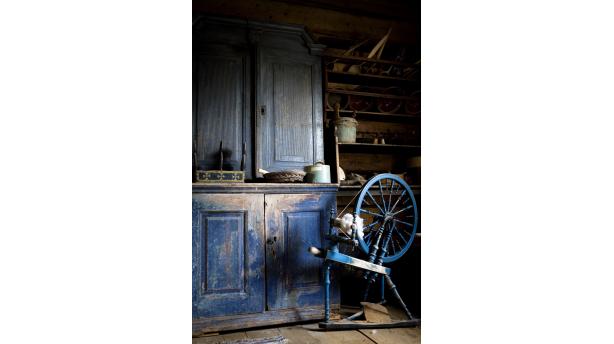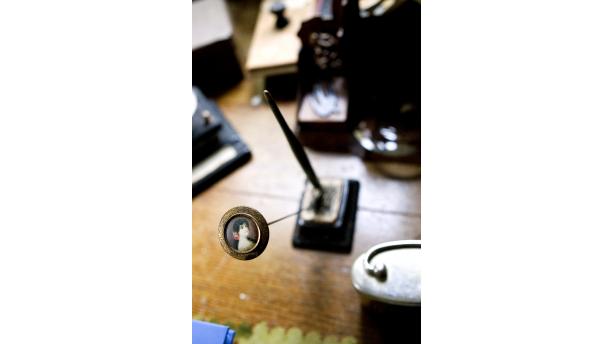Museum A-Ö » Karijoki Museum
Karijoki Museum




Did you know...
During the war paper was used for making shoes, and in the clothing collection of the museum can be found several pairs of fine paper shoes.
Beside the river close to the old highway stands an old peasant house filled with stories of old time Karijoki. In the museum are displayed inventive tools, beautiful fabrics and worn-out household items. Come and enjoy the sing-along or the pancake party in a beautiful summer surrounding.
The museum is located on Marttusen mäki (Marttunen’s Hill). The name stems from the first matron of the estate, the Tavastian Martta, who was at the same time one of the first permanent residents of Karijoki. The Savonians and the Tavastians utilized the fishing and hunting grounds of Karijoki already in the 17th century, and gradually they settled the region permanently. Juho Rinta-Marttunen built a house in 1894 and in the house can still be seen some original details, for instance benches attached to the walls. The peasant house was situated on a central spot immediately next to the former highway.In the cottage can be found various agrarian objects, ordinary and unordinary tools, tableware and furniture. In the exhibition upstairs are displayed textiles woven and decorated by Karijoki matrons. Hanging on the ceiling, walls and tables are embellished linens and tapestries, woven softly coloured blankets and different kinds of dresses and shirts. One of the pearls of the collection is the first version of the national dress of Karijoki made in the 1940s, and a dress, which for economical reasons was sewn from various smaller pieces of fabric. In one of the rooms in the attic has been assembled a shoemaker’s workshop of old times.
One of the museum’s gems is a sky-blue fiddle case with a lock carved from wood. The fiddle case used to belong to a warm-hearted bank group manager from Karijoki, Kalle Uusi-Prosi. When the bank refused to lend money to the old and the poor, he lent them the money from his own reserves. He was a strict and meticulous man, but also a liked folk musician in the village.
To the area have been transported a smoke sauna from the 1940s and a barn called the Hannula Barn dating back to 1841. In the barn are on display diverse domestic and milk processing objects and tools. On the estate are arranged during the summertime for example sing-along events and frying of pancakes and sausage.
In the Karijoki village is a restored croft from the year 1852 called Liisa’s Croft. Liisa taught the children of the village in her small home all the way to the 1920s, long after the elementary school system had been established. The cottage was still inhabited in the 1970s, and for instance a bench and a chair still remain from Liisa’s time.



